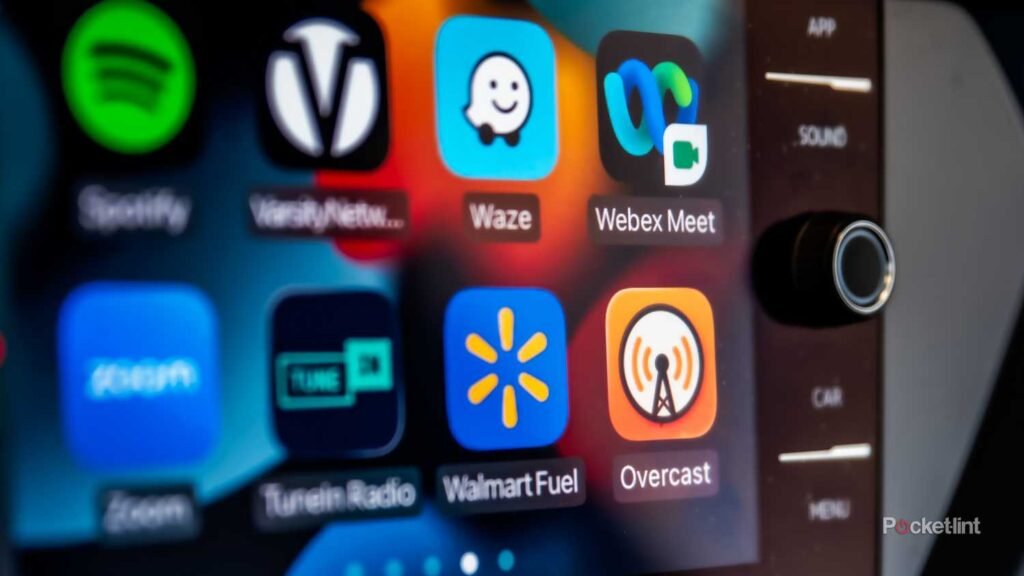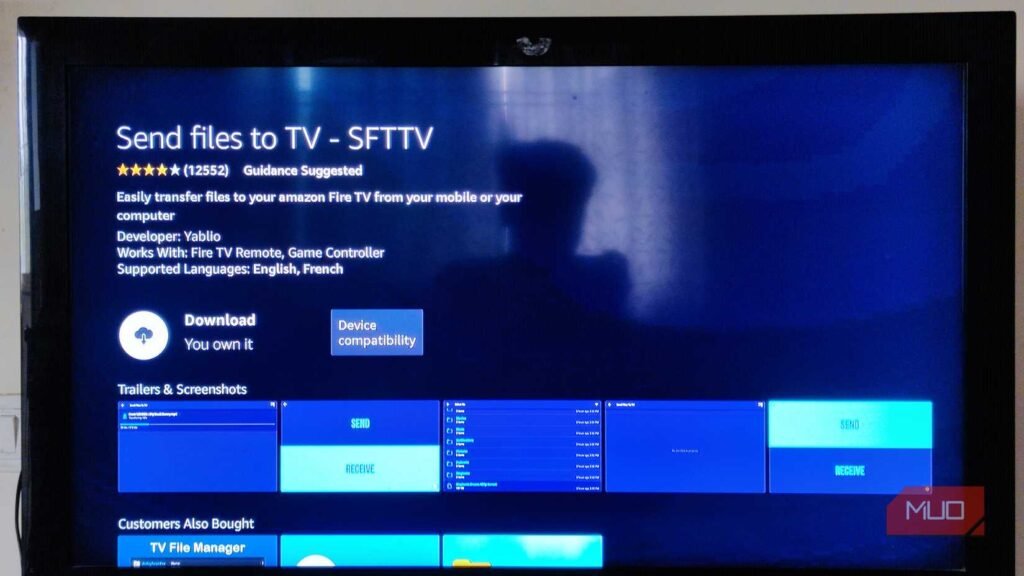Note-taking apps are everywhere, but many of the most popular ones—like Evernote or Notion—are closed-source. Some of the key benefits of using open-source software are transparency, flexibility, and true ownership of your notes. Additionally, these apps are often free, highly customizable, and backed by passionate communities that continually refine and improve them.
They also give you more choice over how and where your data is stored, which makes them especially appealing if privacy matters to you. To cut through the noise, I put six of the best open-source note-taking apps to the test to see which ones stand out—and which might just replace your current go-to.
My evaluation criteria
Each app approaches note-taking in a unique way, offering distinct features that appeal to different users. This means an app that appeals to one group may not suit another. Therefore, to fairly compare these six open-source note-taking apps, I focused on factors that matter most to everyday users. The first evaluation criterion was ease of use because no one wants to wrestle with a steep learning curve to jot down notes.
Next, I examined the available features, including privacy, support for Markdown, organizational tools such as tags or folders, whether the app could handle both quick notes and long-form writing, and customization options. Another critical feature was cross-platform support and sync because it’s a standard expectation that a great note-taking app should work seamlessly across desktop and mobile devices.
Pricing also mattered, since open-source doesn’t always mean completely free. It may be free to use in a limited capacity, similar to apps like Obsidian, which offer free versions with paid upgrades. The last criterion was unique selling points or standout features.
The apps I tried
With my evaluation criteria in place, I researched to find some of the best open-source note-taking apps on the market for comparison. With dozens of open-source note-taking apps out there, narrowing down the list was half the challenge.
However, to make my work easier, I only considered apps that were widely recommended by the open-source community, are actively maintained, or have been around long enough to prove reliability. I also considered those that have unique features that make them hard to ignore. That’s how I narrowed the list of apps from dozens to six solid options.
1. Simplenote
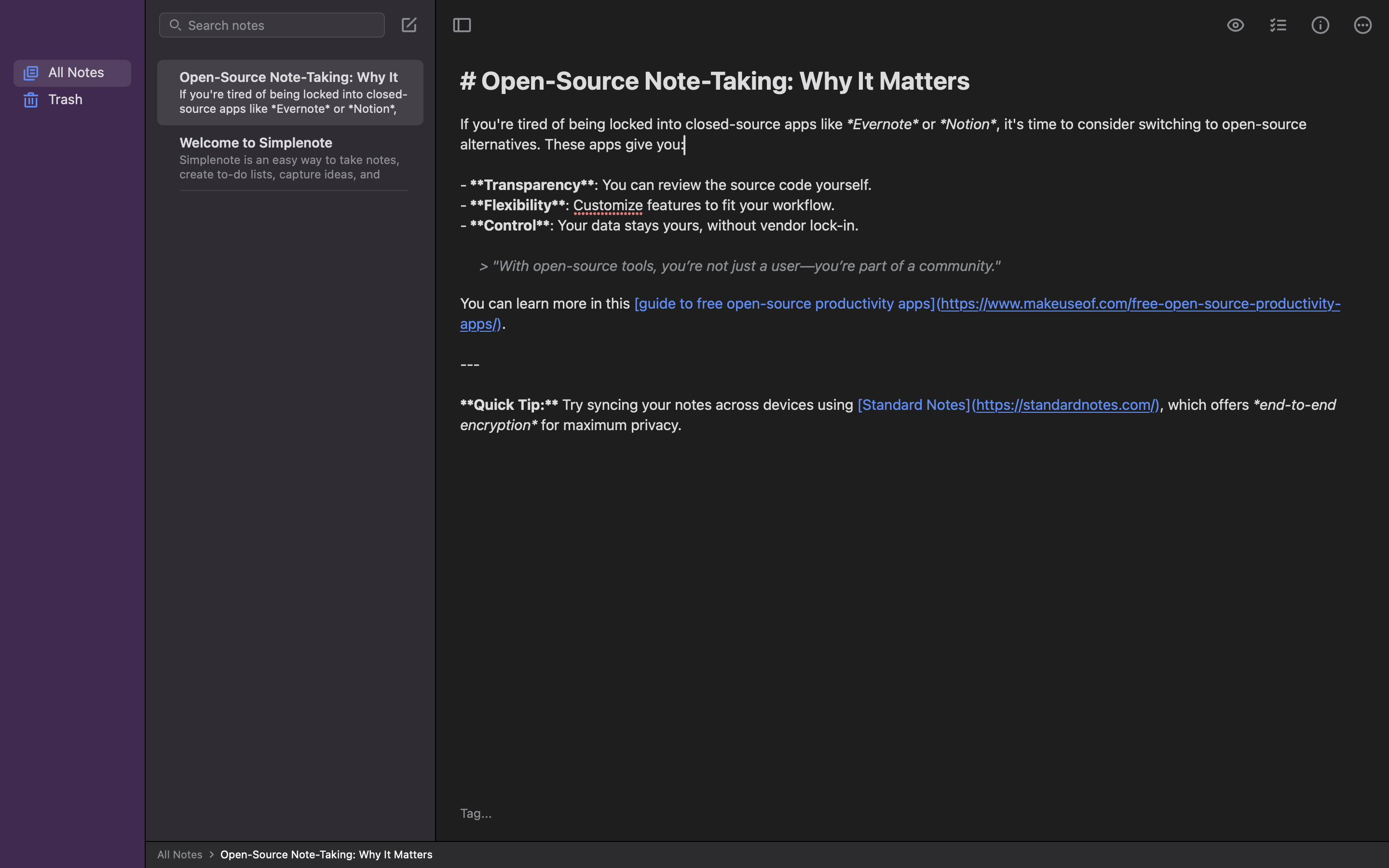
True to its name, Simplenote is all about simplicity. It’s no wonder why Simplenote is a minimalist dream. Instead of bloating the interface with dozens of features you’ll never use, the app gives you just enough to jot down your notes. There are no complex menus and no unnecessary clutter, just a distraction-free space that’s ready to capture your thoughts whenever you want to.
That simplicity is both its biggest strength and weakness. If all you need is a lightweight app for to-do lists, quick thoughts, or basic writing, Simplenote may be the only note-taking app you need because it excels at that. Its clean interface makes it easy to jot things down quickly, organize with tags, and sync across devices without hassle. Even better, you can create notes in plain text or Markdown if you need to add styles.
Despite its simplicity mantra, you can link notes together, which is helpful for cross-referencing. Additionally, you can search your notes if you need to find information, and Simplenote has a publishing feature if you need to publish a note online for public access.
2. Logseq
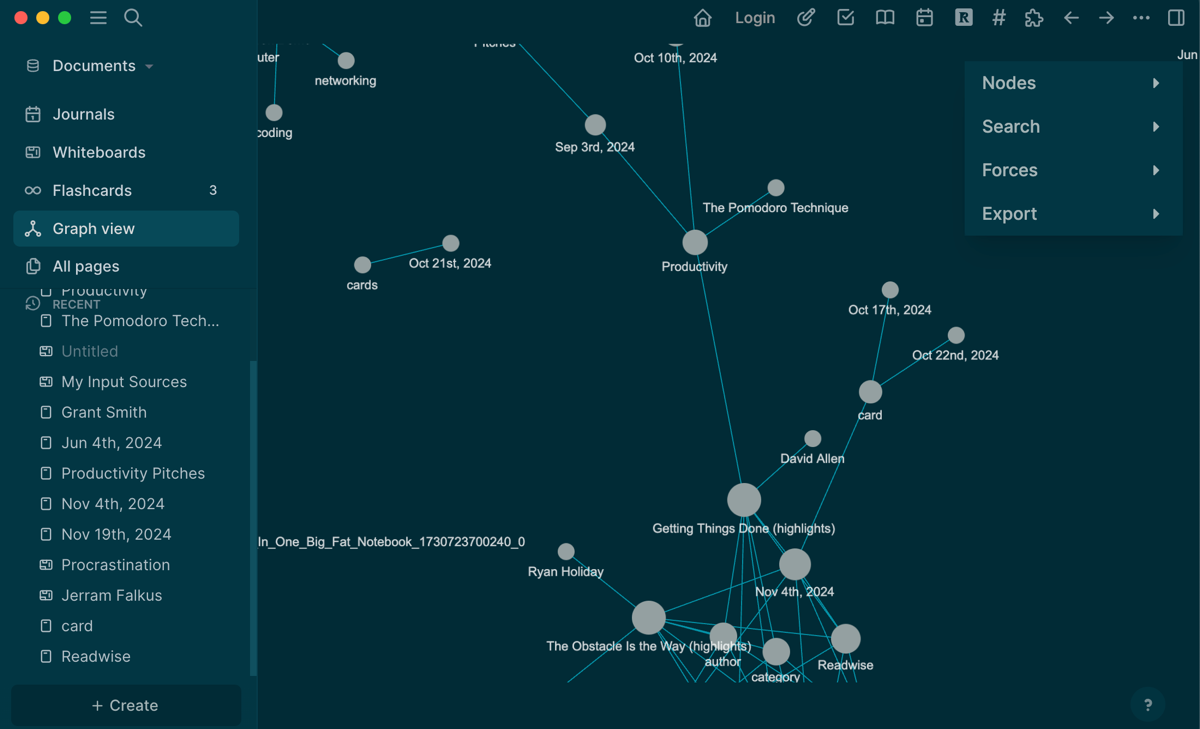
Logseq is another solid open-source note-taking app. If you’ve used Obsidian, Logseq is the perfect alternative. Instead of using traditional folders to organize notes, it uses an outliner and backlink system, letting you build a connected web of ideas. It’s a perfect note-taking app if you’re interested in creating a personal knowledge management system rather than just writing notes.
The app supports both Markdown and org-mode, giving you flexibility in how you write and format your notes. Logseq works offline, so you retain complete control of your data. Like many modern note-taking apps, it gives you a note for each day, making it easy to organize your thoughts daily. For organization, Logseq has pages and tags. On top of that, Logseq has strong task management features, including to-dos and scheduling.
3. Joplin
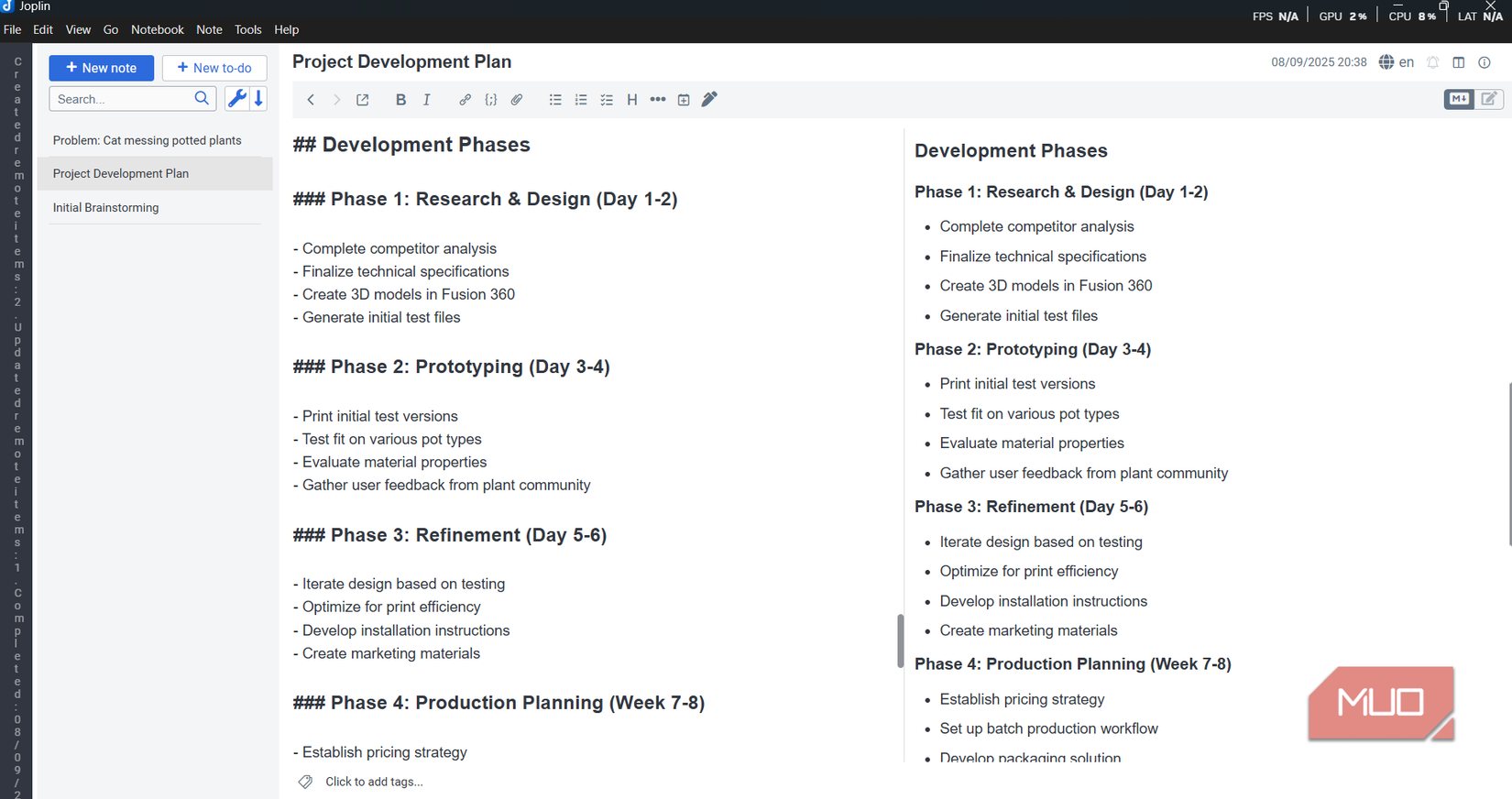
Joplin is a note-taking app that is packed with all you need to jot down your ideas. Unlike minimalist note-taking apps, Joplin supports rich text formatting, Markdown, attachments, images, and even web clippings through its browser extension. This makes it versatile enough for everything from basic note-taking to storing research articles, PDFs, or project documentation. Joplin is also a solid alternative to Obsidian.
It makes organization easier through the use of notebooks and sub-notebooks, and there’s also a tagging system if you prefer. However, one of its standout features is its flexibility in syncing. Unlike many note-taking apps that lock you into a proprietary cloud, Joplin lets you choose to host your notes in Joplin Cloud or in third-party services like Dropbox, OneDrive, or your own WebDAV server.
It’s also customizable via plugins and offers end-to-end encryption to keep your data private. You don’t have to use the cloud, though, as Joplin is one of the best offline-first note-taking apps that lets you sync data if and when you want.
4. Standard Notes
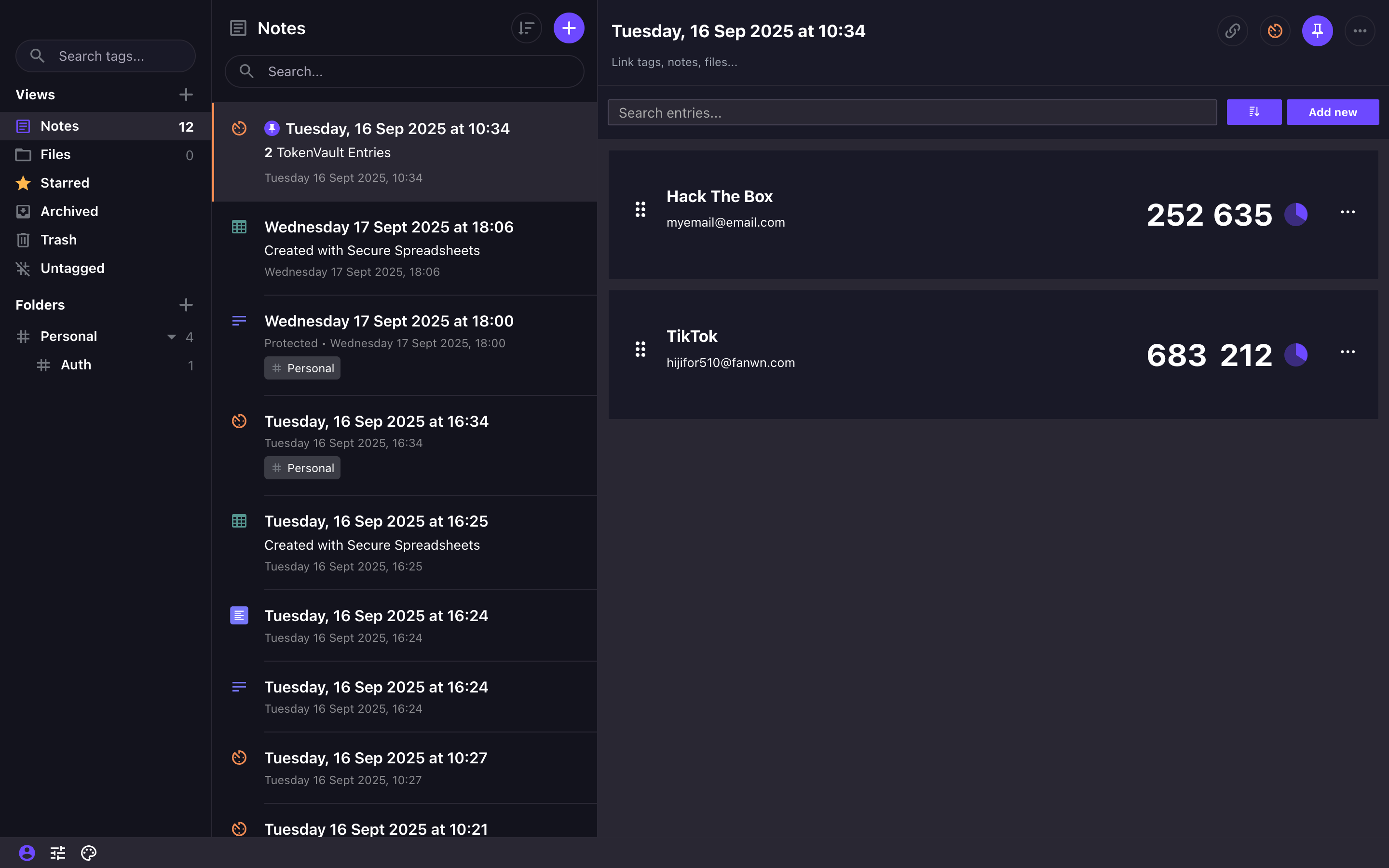
Standard Notes is a privacy-first note-taking app that stands out for its focus on encryption and longevity. Despite that, it’s a capable note-taking app with a variety of features that make it one of the best. On matters of security and privacy, it utilizes end-to-end encryption to protect your notes. It takes an additional step by not supporting password resets, thereby reducing potential attack vectors.
While your notes are encrypted, Standard Notes allows you to password-protect any note in the app. When it comes to writing, Standard Notes keeps it simple but will enable you to choose advanced options when you need them. For instance, it has several note types, including rich text, plain text, Markdown, spreadsheet, and code.
You can upload files, but by far its standout feature is a built-in authenticator. And when it comes to customization, it provides different themes and supports plugins for additional functionality. To organize your notes, a tagging system is available that you can use to create folders and sub-folders.
5. Zettlr
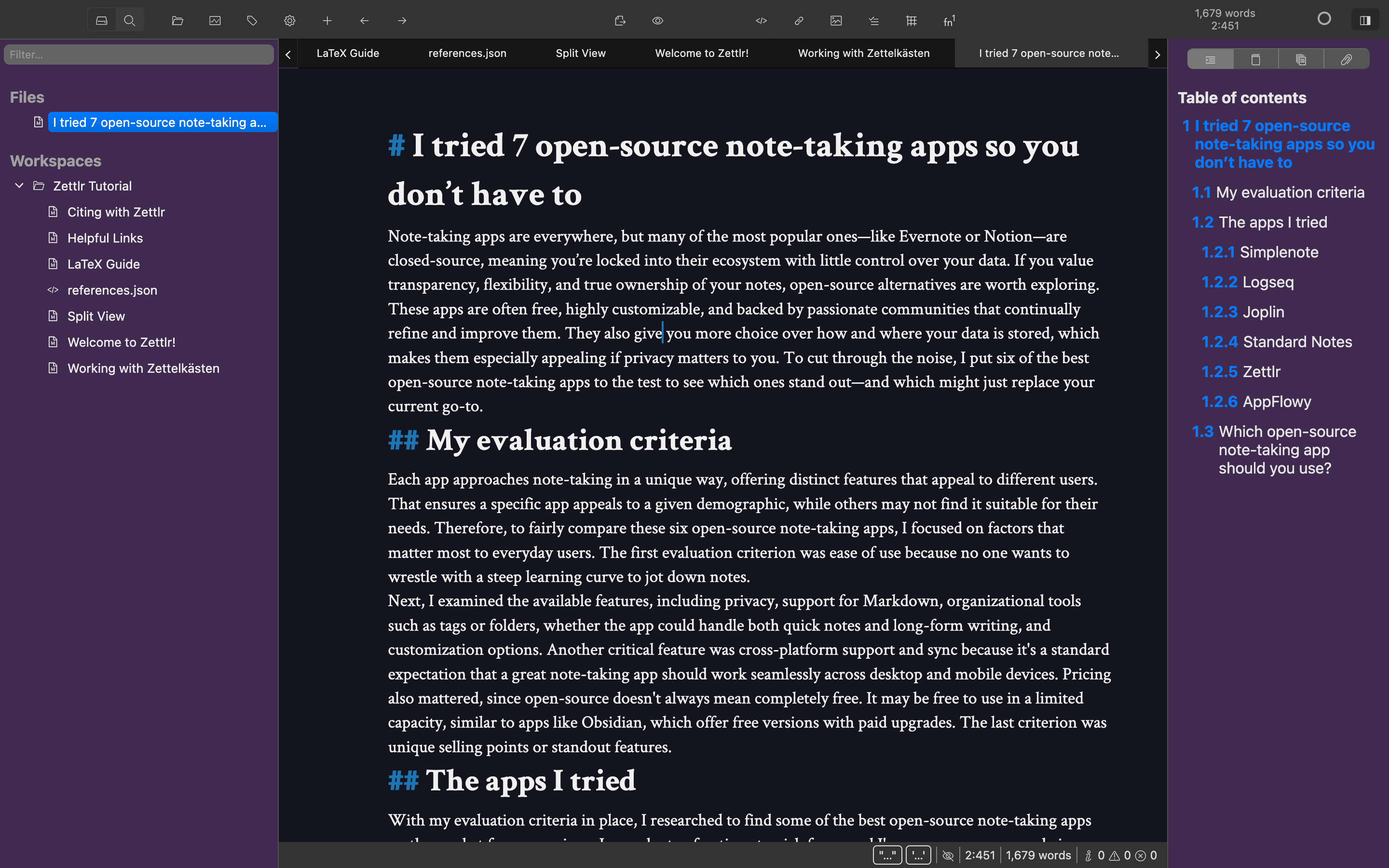
Zettlr is a Markdown-focused editor designed with writers, researchers, and students in mind. It’s an offline-first note-taking app, and as such, every note is a Markdown file that lives on your device. Unlike other note-taking apps that I tried, Zettlr feels closer to a complete writing environment. For students and researchers, it supports citation management, so if you’ve used the Zotero plugin for Word, you’ll feel right at home.
Zettlr also makes it easy by giving you a view of all the references in the current file in its sidebar. Additionally, you can cross-link files or use tags to link your notes. Split view is available, which is perfect when you’re writing and referencing a past file. The main drawback of Zettlr is that it’s only available on desktop (Windows, macOS, and Linux). It lacks mobile apps, which is a bummer. However, it’s free, unlike other apps on this list that offer a free version and a subscription plan to unlock additional features.
6. AppFlowy
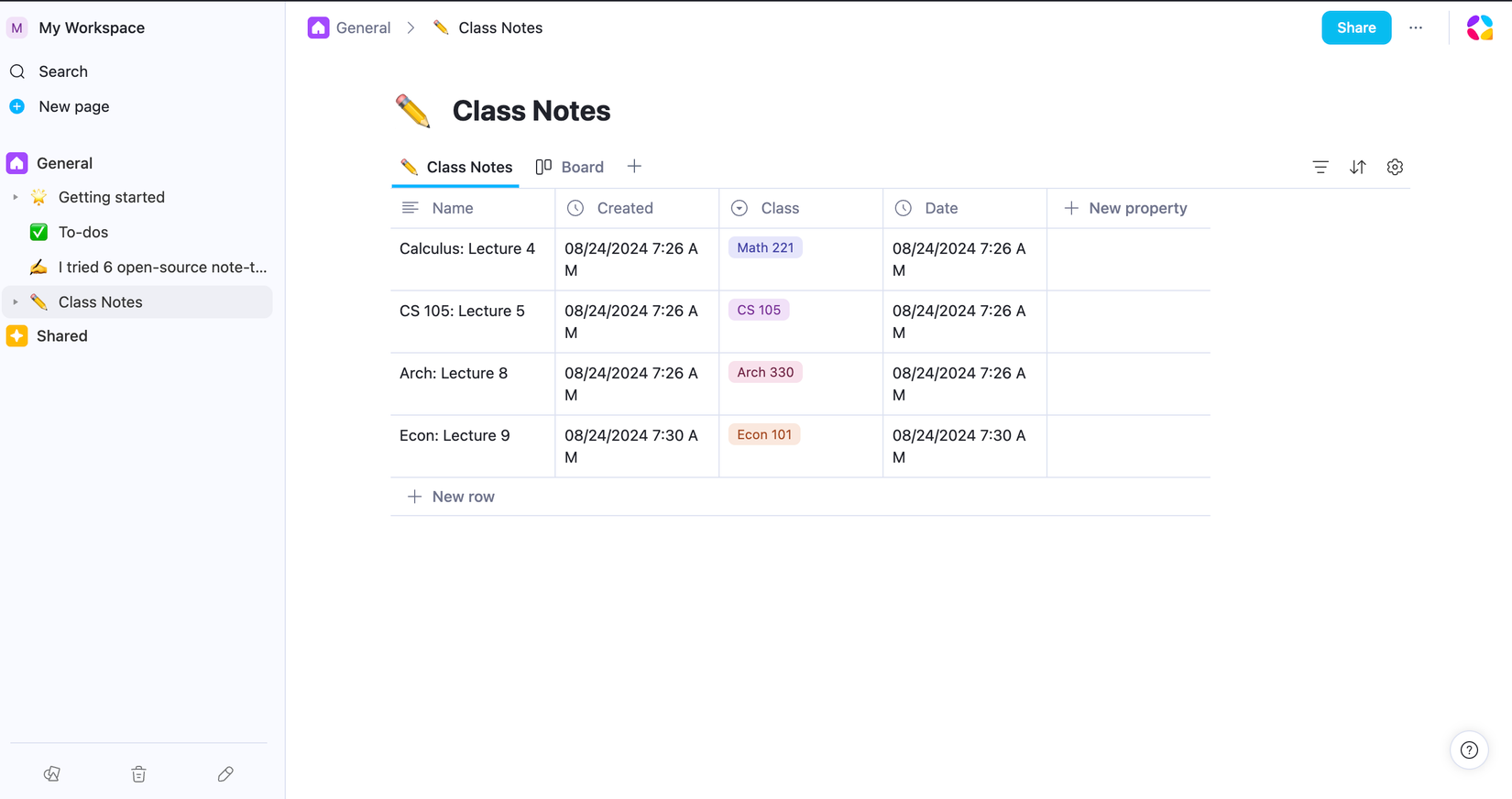
AppFlowy is known as the open-source answer to Notion, and for good reason. The interface draws huge inspiration from Notion, from its block-based editing system to the ability to create pages, databases, Kanban boards, and structured notes with a clean and intuitive interface.
It supports Markdown but also provides shortcuts for creating different block types, from listing, code, and embeds to headings, math equations, and toggles. You can also link to other pages, just like in Notion. AppFlowy is packed with ready-made templates for different use cases made by the team or community. Being open-source, it’s built with privacy and flexibility in mind, giving you complete control over your notes and data. So much so that it allows you to self-host so that you can run it locally or on your own server.
But if you prefer the team to handle everything for you, there’s a free plan that you can use. AppFlowy supports offline access, and all your data is saved on your device first before syncing to the cloud. For a while, its edge over Notion was offline support. However, that was before Notion added an offline mode.
Which open-source note-taking app should you use?
After trying the six apps, you’d expect me to recommend one app to rule them all. But it would be misleading to claim there’s a single best option. The best choice really depends on your needs. If you want something simple, lightweight and cross-platform, Simplenote is hard to beat. However, the trade-off is lack of end-to-end encryption, so I wouldn’t recommend it if you need strong privacy. Standard Notes excels at its simplicity, versatile features with an authenticator, and, most importantly, end-to-end encryption with excellent cross-platform support.
If you’re a researcher or knowledge worker who values linking ideas, Logseq and Joplin shine with their outliner and graph features with multi-platform support. Zettlr is a perfect choice for long-form writing because of its file-based organization and citation management features. However, it’s only available on desktop, which is a bummer if you want to do writing on mobile as well.
Finally, if you’re drawn to Notion’s style but want an open alternative, AppFlowy should be your go-to note-taking app. In other words, pick the one that best aligns with your workflow—whether that’s simplicity, research, security, or flexibility. The best thing is you don’t have to pick one right away. Try each for a week or two, then decide which one fits you better.



